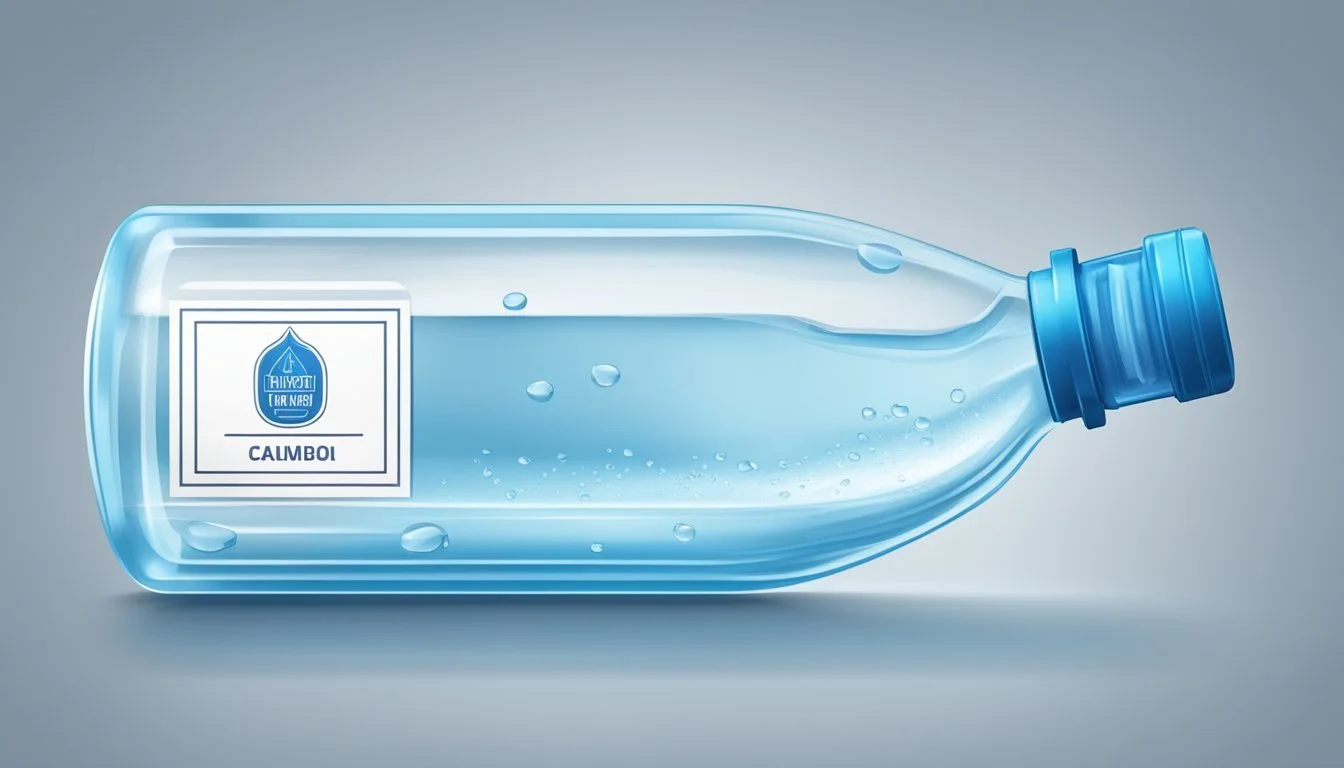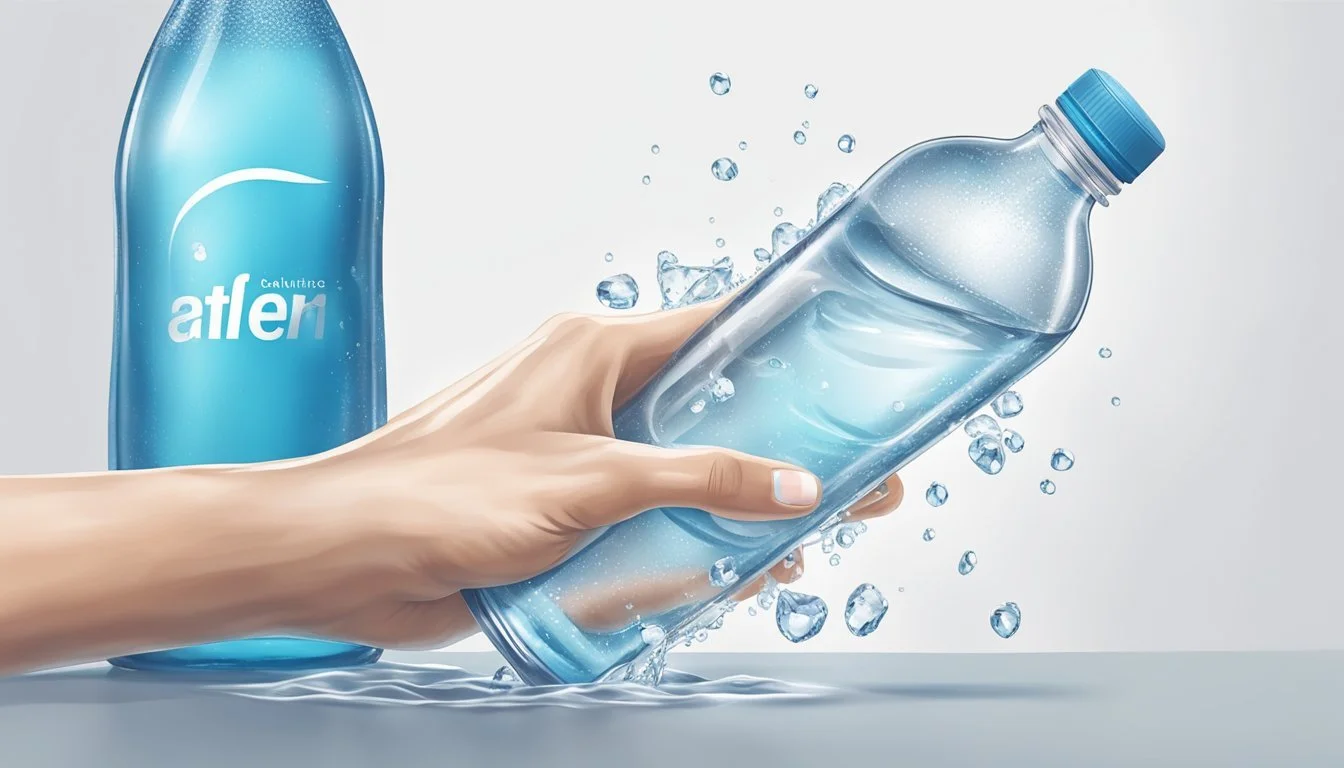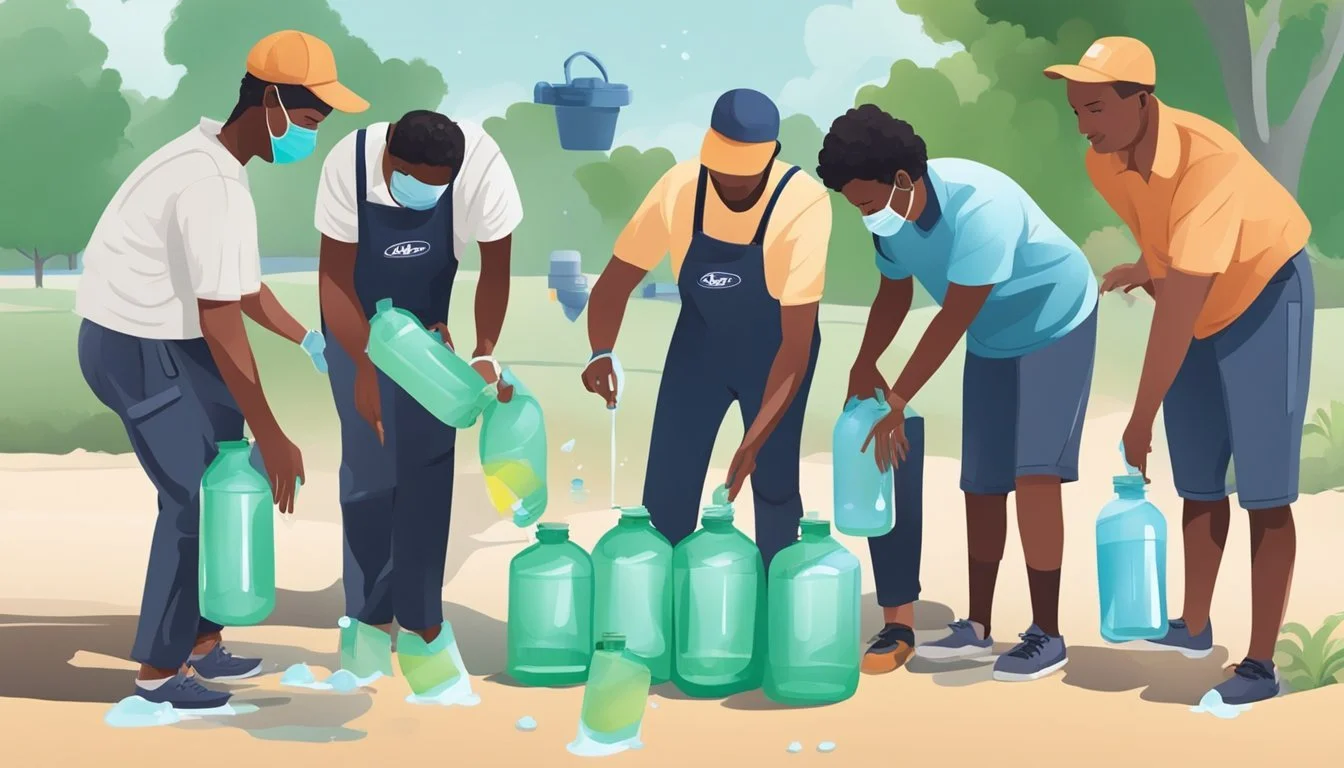Is Just the Best Bottled Water?
The Convenient Hydration Solution
JUST Water offers a unique approach to bottled spring water, combining environmental consciousness with pure hydration. Sourced from natural springs in Glens Falls, NY, this water comes in plant-based cartons made from renewable resources. The eco-friendly packaging is designed to protect the water's natural alkaline properties, maintaining a pH of 8.0.
The brand's commitment to sustainability extends beyond its packaging. JUST Water bottles only a fraction of the excess spring water available, ensuring minimal environmental impact. This responsible sourcing, combined with their B Corp certification, demonstrates a dedication to ethical business practices.
JUST Water provides consumers with a choice that aligns with growing environmental concerns. The cartons are fully recyclable, addressing the issue of plastic waste associated with traditional bottled water. By choosing JUST Water, consumers can enjoy pure spring water while supporting a more sustainable approach to packaging and water sourcing.
The Essence of 'Just Water'
Just Water stands out in the bottled water industry with its unique approach to sustainability and social responsibility. The brand's core values and origin story reflect a commitment to environmental stewardship and positive change.
Brand Philosophy and Vision
Just Water emphasizes eco-friendly packaging and ethical sourcing practices. The company uses bottles made primarily from plant-based materials, reducing plastic waste. Their water comes from sustainable sources, with a focus on minimizing environmental impact.
Just aims to provide high-quality water while promoting sustainability. The brand's vision extends beyond hydration, seeking to inspire consumers to make more environmentally conscious choices. By choosing Just Water, customers support a business model that prioritizes both people and planet.
Founder's Story and Jaden Smith's Role
Jaden Smith, son of actors Will Smith and Jada Pinkett Smith, played a crucial role in founding Just Water at a young age. His inspiration came from witnessing plastic pollution while surfing.
Smith's concern for the environment led him to create a more sustainable bottled water option. He partnered with experts to develop Just Water's innovative packaging and sourcing methods. Smith remains actively involved in the company, using his platform to raise awareness about environmental issues.
His involvement has helped Just Water gain visibility and credibility among younger consumers. The brand's success demonstrates the potential for celebrity-driven initiatives to create meaningful change in the business world.
Environmental Impact
Bottled water has significant environmental consequences, from production to disposal. The industry contributes to plastic pollution, greenhouse gas emissions, and resource depletion.
Plant-Based Packaging Initiatives
Some bottled water companies are exploring plant-based packaging alternatives. These materials are derived from renewable resources like sugarcane or corn starch.
Plant-based bottles can reduce reliance on fossil fuels for plastic production. They often have a lower carbon footprint compared to traditional petroleum-based plastics.
However, challenges remain. Plant-based packaging may not be as durable or cost-effective as conventional options. Proper disposal and recycling infrastructure are also needed to maximize environmental benefits.
Reducing Plastic Pollution with Eco-Friendly Materials
Eco-friendly materials offer promising solutions to combat plastic pollution from bottled water. Recyclable aluminum cans are gaining popularity as an alternative to plastic bottles.
Aluminum is infinitely recyclable without losing quality. It has a higher recycling rate than plastic and requires less energy to recycle.
Some companies are developing biodegradable plastics made from natural materials. These break down more quickly in the environment, potentially reducing long-term pollution.
Glass bottles are another eco-friendly option. They're fully recyclable and don't leach chemicals into water.
Contribution to Minimizing Plastic Bottle Use
Efforts to minimize plastic bottle use focus on changing consumer behavior and improving infrastructure. Reusable water bottles are a key strategy to reduce single-use plastic consumption.
Many cities are installing public water fountains and refill stations. This makes it easier for people to choose tap water over bottled options.
Some businesses and institutions have banned the sale of bottled water on their premises. They encourage the use of refillable bottles instead.
Education campaigns highlight the environmental impact of bottled water. These aim to shift public perception and promote sustainable alternatives.
Product Features
JUST Water offers naturally alkaline spring water with distinctive packaging and sourcing. The product stands out for its mineral content, mountain spring origin, and eco-friendly container options.
Naturally Alkaline and Mineral Content
JUST Water boasts a naturally alkaline pH of 8.0. This higher pH level appeals to consumers seeking alternatives to standard bottled water. The water contains natural minerals from its mountain spring source.
These minerals contribute to the water's crisp, refreshing taste. JUST Water does not add artificial ingredients or enhancements, preserving the purity of the spring water.
The mineral content may include trace amounts of calcium, magnesium, and potassium. These naturally occurring elements can provide subtle health benefits to consumers.
Source of Water: Adirondack Mountains
JUST Water sources its product from springs in the Adirondack Mountains of New York. This pristine location ensures high-quality, mountain-sourced spring water.
The company uses only excess water from the Glens Falls watershed. This approach helps maintain the local ecosystem's balance.
Adirondack spring water is known for its purity and taste. The natural filtration through mountain rock layers enhances the water's quality.
JUST Water emphasizes responsible sourcing practices. They work with local communities to ensure sustainable water collection.
Packaging Size and Options
JUST Water offers its product in various sizes to suit different consumer needs. The standard size is a 16.9 fl oz (500 ml) carton.
These cartons use plant-based materials for a more eco-friendly packaging solution. The design reduces plastic waste compared to traditional bottled water containers.
JUST Water also provides larger sizes for bulk purchases. These may include multi-packs or larger individual containers.
The unique carton design stands out on store shelves. It features a distinctive shape and colorful branding that differentiates it from other bottled water options.
JUST Water's packaging is recyclable and made from renewable resources. This aligns with their commitment to environmental sustainability.
Taste and Refreshment
Bottled water offers a range of taste profiles and refreshment levels. Factors like mineral content, source, and packaging influence the drinking experience.
Refreshing Taste Profile
Many bottled water brands strive for a clean, crisp taste. Spring waters often have a subtle mineral flavor, while purified waters aim for neutrality. Some waters contain natural or added electrolytes, enhancing their refreshing qualities.
Carbonated options provide a fizzy sensation. The bubbles can make the water feel more invigorating and palate-cleansing. Still waters, on the other hand, offer a smoother drinking experience.
Temperature plays a crucial role in refreshment. Chilled bottled water tends to taste more satisfying, especially on hot days or after physical activity.
Comparison to Other Water Options
Bottled water competes with tap water, filtered water, and other beverages. Taste preferences vary widely among consumers.
Some people prefer bottled water's consistency and perceived purity. Others find tap water equally refreshing, especially in areas with high-quality municipal supplies.
Filtered water systems offer a middle ground. They can improve tap water taste while reducing environmental impact compared to bottled options.
Taste tests often yield mixed results. Some consumers can distinguish between water sources, while others find little difference. Personal preference, local water quality, and marketing all influence perceptions of taste and refreshment.
Accessibility and Availability
Bottled water can be obtained through various retail channels and distribution networks. Its availability varies globally, with differences in access between urban and rural areas.
Retail Availability and Online Shopping
Bottled water is widely accessible in stores across the United States. Major supermarket chains like Publix in Florida stock a range of brands and sizes. Convenience stores and gas stations also typically carry bottled water options.
For those who prefer online shopping, e-commerce giants like Amazon offer extensive selections. Many brands provide free shipping on bulk orders. Online marketplaces allow consumers to compare prices, read reviews, and have water delivered directly to their homes.
Some companies offer subscription services for regular bottled water deliveries. This convenience appeals to busy households and offices that consume large quantities.
Global and Local Distribution
Bottled water distribution varies significantly worldwide. In developed countries, it's readily available in stores and vending machines. Urban areas typically have more options and better access than rural regions.
In areas with unreliable tap water, bottled water becomes a crucial resource. However, its availability can be limited by transportation infrastructure and economic factors.
Local bottling plants help improve distribution in some regions. They reduce transportation costs and increase availability. Some governments and NGOs distribute bottled water during emergencies or in areas lacking safe drinking water.
International brands often coexist with local options in many markets. This mix provides consumers with choices at different price points.
Consumer Experience
Just Water's online platform offers a streamlined interface for customers to explore bottled water options and tailor their preferences. The system incorporates features to enhance user interaction and simplify the selection process.
User Interaction with Just Water Online Platform
The Just Water website provides an intuitive layout for easy navigation. Users can quickly access product information, pricing, and sustainability details. The platform offers a responsive design that adapts to various devices, ensuring a consistent experience across desktop and mobile.
Key features include:
Quick product search
Detailed water source information
Environmental impact statistics
Customer reviews and ratings
The site's language settings allow users to view content in their preferred language. A discreet mobile menu, triggered by a customizable icon, improves usability on smaller screens.
Navigating Options and Customizing Preferences
Just Water's platform empowers consumers to personalize their bottled water choices. Users can filter options based on criteria such as water source, pH level, and packaging type. The system remembers user preferences, streamlining future purchases.
Customization features include:
Subscription service with adjustable delivery schedules
Bundle creation for mixed product orders
Gift options with personalized messages
The platform utilizes color-coded categories to aid in product differentiation. Users can adjust the interface's color scheme and contrast for improved visibility. Advanced sorting tools help customers find products that align with their specific needs and values.
Sustainability Journey
JUST water has made significant strides in eco-friendly packaging and environmental stewardship. The company's efforts span from local community involvement to long-term sustainability goals.
Local Community Engagement
JUST water sources its spring water from Glens Falls, New York. This partnership supports the local economy while ensuring responsible water use. The company works closely with Glens Falls officials to maintain sustainable withdrawal rates.
JUST water also invests in community education programs. These initiatives focus on water conservation and recycling awareness. Local schools benefit from company-sponsored environmental workshops.
The brand's presence has created jobs in Glens Falls. This economic boost helps strengthen the community's relationship with JUST water.
Long-Term Goals for Environmental Stewardship
JUST water aims to lead the bottled water industry in sustainability. The company has set ambitious targets for reducing its environmental impact.
By 2024, JUST water plans to achieve 100% renewable packaging. Their current bottle design incorporates 82% plant-based materials. This shift has already decreased greenhouse gas emissions by up to 74% compared to traditional PET bottles.
JUST water is working towards carbon neutrality. The brand has implemented energy-efficient production processes. They also invest in carbon offset projects to balance remaining emissions.
Water conservation remains a top priority. JUST water is developing technologies to minimize water waste during bottling. They're also exploring rainwater harvesting for non-potable uses in their facilities.
Quality Assurance
Bottled water companies employ rigorous quality control measures to ensure product safety and consistency. These processes encompass careful water sourcing, advanced purification techniques, and compliance with regulatory standards.
Water Sourcing and Purification Processes
Many bottled water brands source their product from natural springs or mountain aquifers. The Smith family's brand, for example, uses mineral-rich spring water from protected mountain sources. Companies often highlight naturally alkaline water as a selling point.
Purification methods vary but typically include:
Filtration (reverse osmosis, carbon filtration)
UV light treatment
Ozonation
These processes remove contaminants while preserving beneficial minerals. Some brands add minerals back after purification to enhance taste and nutritional value.
Regulatory Compliance and Certifications
Bottled water in the U.S. must meet FDA standards, which were first adopted in 1973. These regulations cover:
Allowable contaminant levels
Labeling requirements
Good manufacturing practices
Many companies go beyond basic compliance, obtaining additional certifications such as:
NSF International
International Bottled Water Association (IBWA) membership
These certifications involve regular testing and audits. Despite these measures, the FDA's oversight of the bottled water industry has been criticized as understaffed. Consumers can check company websites or bottle labels for water source information and quality reports.
Community and Outreach
Bottled water companies engage in various community initiatives and educational efforts to promote their products and build positive relationships with consumers. These programs often focus on sustainability, water conservation, and environmental awareness.
Educational Initiatives and Partnerships
Bottled water brands frequently partner with schools and community organizations to provide educational resources about hydration and water quality. Many companies offer classroom materials, interactive workshops, and facility tours to teach students about the bottling process and water safety. Some brands sponsor science fairs or offer scholarships to encourage youth interest in water-related fields.
Industry associations also play a role in public education. The International Bottled Water Association (IBWA) runs programs to inform consumers about bottled water regulations, quality standards, and environmental practices. These initiatives aim to build trust and address misconceptions about bottled water products.
Promoting Water Education and Conservation
Bottled water companies often launch campaigns to raise awareness about global water issues. These efforts may include funding clean water projects in developing countries or supporting disaster relief efforts with bottled water donations. Some brands partner with environmental groups to promote responsible water use and protect water sources.
Many companies emphasize their sustainability practices through public outreach. This can involve highlighting recycling programs, reduced packaging initiatives, or the use of recycled materials in their bottles. Social media campaigns and community events are used to engage consumers in conversations about water conservation and responsible consumption.







